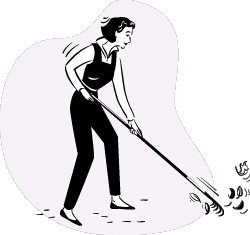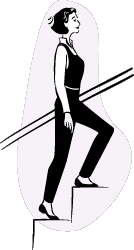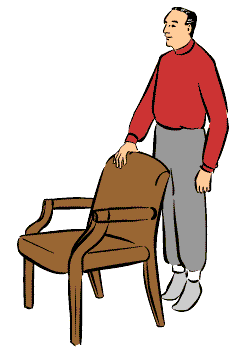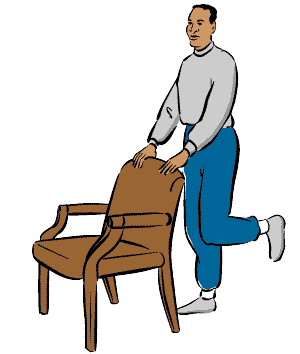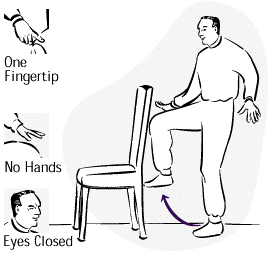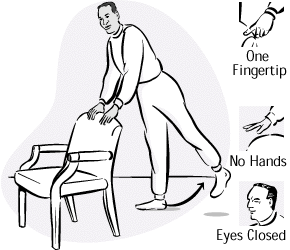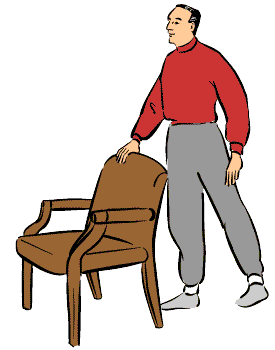Keeping Fit in
the Third Age
by Sep Meyer
|
"The
good news . . . is that people can benefit from even moderate levels of physical
activity" - Surgeon
General of the United States
|
You
are never too old to take exercise.
Exercise
will not restore your youth, but it will re-energise you; and the right
exercise, done regularly in the right way, i.e. appropriate to your
age and physical condition, will make you fit and keep you fit.
Indeed,
the failure to embark on and maintain some form of physical activity could be
more harmful than any risk that may be associated with exercising.
And
this does not apply only to those "older people" who have only
recently entered the "Third Age" (usually assumed to be age
50-plus). Researchers have found that exercise and physical activity can
improve the health of people who are 90 or older, who are frail, or who have the
diseases that seem to accompany ageing. Staying physically active and exercising
regularly can help prevent or delay some diseases and disabilities as people
grow older. In some cases, it can improve health for older people who already
have diseases and disabilities, if it's done on a long-term, regular basis.
What
then are the criteria that need to be observed in the light of advancing years
and diminishing physical ability? First of all, let's look at types of
exercise.
Types
of Exercise
These fall into four main categories:
◙
Endurance Exercises
◙ Balance
Exercises
◙ Strength
Exercises
◙ Flexibility
Exercises
Endurance
exercises increase your breathing and
heart rate. They improve the health of your heart, lungs, and circulatory
system. Having more endurance not only helps keep you healthier; it can also
improve your stamina for the tasks you need to do to live and do things on your
own -- climbing stairs and grocery shopping, for example. Endurance
exercises also may delay or prevent many diseases associated with ageing, such
as diabetes, colon cancer, heart disease, stroke, and others.
Balance
exercises help prevent
a common problem in older adults: falls. Falling is a major cause of
broken hips and other injuries that often lead to disability and loss of
independence. Some balance exercises build up leg muscles; others require
simple activities like briefly standing on one leg.
Strength
exercises do more than just make you stronger. They build
your muscles and give you more strength to do things on your own. Even very
small increases in muscle can make a big difference in ability, especially for
frail people. Strength exercises also increase your metabolism, helping to keep
your weight and blood sugar in check. That's important because obesity and
diabetes are major health problems for older adults. Studies suggest that
strength exercises also may help prevent osteoporosis.
Flexibility
exercises help to
keep your body supple by stretching the muscles and the tissues that hold the
body's structures in place. Physical therapists and other health professionals
recommend certain stretching exercises to help patients recover from injuries
and to prevent injuries from happening in the first place. Flexibility
also may play a part in preventing falls.
|
Statistical
evidence reveals that physically active men are healthier - and live longer -
than sedentary men
|
Some
types of exercise improve just one area of health or ability. Frequently,
however, an exercise has several benefits, so it's important to exercise as much
as you can, to combine as many of the four types of exercise as possible, and to
increase the types and amounts as your progress. All within certain
constraints.
◙
Do not attempt to do too much too
quickly, particularly when you start to embark on an exercise programme.
It's good to be enthusiastic, but sensible to start at the appropriate level
that you can maintain, and work your way up gradually. It's rather like
weight loss dieting. Weight that is lost too quickly is frequently
regained every more quickly. Weight that is lost gradually,
following a regime that is not too strenuous, is easier to maintain.
Exercise, like diet, should be for life - regardless of your age - it should be
a permanent habit.
◙
Don't be afraid of exercising for fear that
it will be too strenuous. You do not have to do strenuous exercises
to gain health benefits. Moderate exercise is also effective.
◙
What you do, and how much you do, will vary
from person to person. It will depend upon your age and physical condition
at the time you begin, as well as what goal you have set yourself, and to what
end it has been targeted. You may want to build up leg muscles
sufficiently to embark on a programme of hiking, or jogging, or cycling.
On the other hand, you might simply want to strengthen your arm muscles enough
to do the washing-up yourself instead of having someone do it for you. The
aim is simply to improve from wherever you are right now. Remember, you
can always get there from here.
|
.
. . people 90 and older who have become physically frail
from inactivity can more than double their strength through simple
exercises in a fairly short time. For some, that can mean the difference
between getting up from a chair by themselves or depending on someone to
help them . . . some people 80 and older progressed from using
walkers to using canes after doing simple muscle-building exercises for
just 10 weeks. - excerpt
from a US Government publication
|
What is the simplest exercise you can do to improve your fitness?
To my mind it is merely to walk. If you haven't exercised for some time,
this will accustom your body to the physical activity. Walking can be done
at whatever rate and level is best suited to your particular physical and mental
condition. And "mental" has not been thrown in there simply to
fill up space. A brisk walk each day will make you feel more
positive, more alive, will reduce stress and help to control depression.
On the physical side, it will burn calories, exercise the heart, the joints, the
muscles, and can reduce the risk of cardiovascular disease by as much as 40 per
cent.
When embarking on a regular walking regime, make sure you are wearing
comfortable walking shoes and don't forget to wear good, thick socks.
Protecting your feet means protecting the 26 small bones, 33 joints, and network
of over 100 tendons, ligaments and muscles that make up each foot.

Sep
Meyer will conclude his article on Exercise in the Third Age in the next online
issue of Nurturing Potential. Readers may also like to be reminded of his
earlier article on fitness in Issue No. 9 - http://www.nurturingpotential.net/Issue9/Fit.htm.
Sep Meyer is a graduate of the
London School of Economics and, since his retirement from a commercial life, has
been devoting his time to the totally non-commercial activity of writing poetry,
magazine articles, book reviews and drama.
